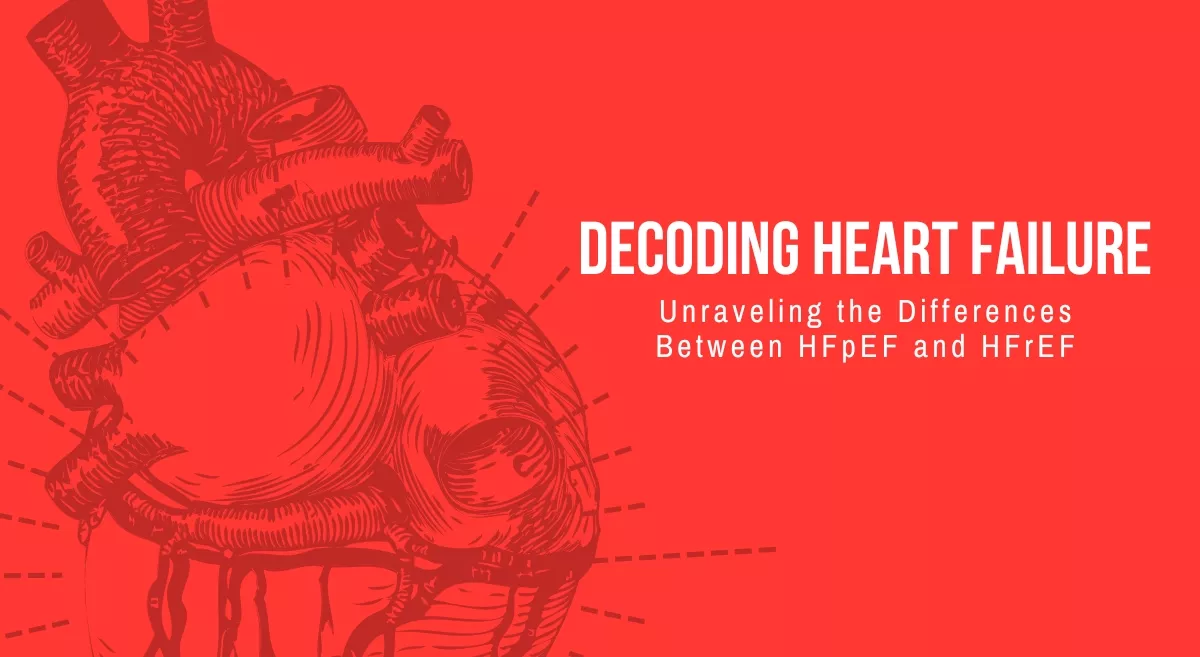Heart failure is a complex disorder that impairs the heart's ability to adequately pump blood. Heart failure is a major source of morbidity and mortality worldwide, with an estimated 26 million individuals suffering from it. Heart failure is a major concern in India, affecting an estimated 10 million individuals.
Understanding Heart Failure
When the heart muscle weakens or becomes injured, it is unable to pump enough blood to meet the body's needs. This can result in fluid buildup in the lungs, abdomen, and legs, resulting in symptoms such as :
- Shortness of breath, especially when exerting oneself or lying down
- Weakness and fatigue
- Legs, ankles, and feet swelling
- Fluid retention causes weight growth.
- Wheezing or coughing
- A fast or erratic heartbeat
- Nausea and loss of appetite
Heart failure can have a substantial influence on a person's quality of life by limiting physical activity, disrupting sleep, and increasing the risk of various health concerns. It is a leading cause of hospitalisation and death, especially among the elderly. Visiting a specialized cardiology hospital in Bangalore ensures that patients get access to advanced diagnostics and treatment for better management.
Distinct Types of Heart Failure
Heart failure is classed into two kinds based on the ejection fraction of the heart, which measures how successfully the heart pumps blood with each contraction. An average ejection fraction ranges between 55% and 70%.
1. Heart Failure with Preserved Ejection Fraction (HFpEF)
HFpEF is a kind of heart failure in which the ejection fraction remains normal or slightly increased despite the heart's inability to adequately pump blood. It can pump normally with high pressure in the heart. It accounts for up to 50% of all cases of heart failure. HFpEF occurs when the ejection fraction is greater than 50%.
HFpEF Mechanisms and Causes
The precise mechanisms underlying HFpEF are complex and remain unknown. Several elements, however, are thought to play a role, including:
- The heart muscle stiffens, making it difficult to relax and fill with blood.
- Filling pressure abnormalities in the heart
- Heart valve structural abnormalities
- Vascular dysfunction, which interferes with blood flow to the heart muscle
- Medical disorders that are underlying, such as hypertension, diabetes and obesity
Risk factors for HFpEF include:
- Growing older
- Blood pressure that is too high
- Obesity and Diabetes
- Kidney illness that is chronic
- Previous heart attack or stroke
Because of the modest symptoms and overlap with other illnesses, diagnosing HFpEF can be difficult. For an accurate diagnosis, a full medical history, physical examination, and diagnostic testing are required —something a top cardiology hospital in Bangalore is well-equipped to provide..
2. Heart Failure with Reduced Ejection Fraction (HFrEF)
HFrEF is a form of heart failure in which the ejection fraction is considerably reduced, usually to less than 40%. This means that the heart's ability to pump blood with each contraction is substantially compromised. HFrEF occurs when the ejection fraction is reduced to less than 40% and HFmrEF (moderately reduced) occurs when ejection fraction is reduced to 40-50%.
HFrEF Mechanisms and Causes
- The following are the most common causes of HFrEF:
- Coronary artery disease, which results in decreased blood supply to the heart muscle
- Heart attack, causing tissue damage and limiting pumping function
- Cardiomyopathies are heart muscle illnesses that weaken or destroy the heart muscle.
- Valvular heart disease is a condition that affects the appropriate opening and shutting of heart valves.
Risk factors for HFrEF include:
- Coronary artery disease (CAD)
- Heart attack history
- Blood pressure that is too high
- Obesity and Diabetes
- Smoking
- Heart failure in the family
HFrEF symptoms are frequently more severe than HFpEF symptoms, making diagnosis easier. However, a thorough examination is still required to rule out other illnesses and discover the underlying reason. Consulting an experienced cardiologist in Bangalore ensures accurate evaluation and targeted treatment.
Treatment Approaches
1. HFpEF Treatment Options
- Medications: Diuretics and blood pressure medicines aid with symptom management.
- Lifestyle Modifications: Lifestyle changes include stressing the need for regular exercise and a heart-healthy diet.
- Surgical Interventions: Surgical interventions may be considered in extreme situations.
2. HFrEF Treatment Options
- Medications: Medications, such as ACE inhibitors and beta blockers, improve heart function and manage symptoms.
- Device Therapy (e.g., CRT, ICD): Advanced technologies for controlling heart rhythm and preventing sudden cardiac arrest.
- Heart Transplantation: In the most severe situations, heart transplantation may be the only option, often performed at a leading heart hospital in Bangalore with expert care..
Key Differences Between HFpEF and HFrEF
- Disparities in Ejection Fraction: The key distinction is the ejection fraction—HFpEF has a preserved ejection fraction, whereas HFrEF has a reduced ejection fraction.
- Pathophysiological Variations: Because the underlying mechanisms and causes of HFpEF and HFrEF differ, treatment techniques and outcomes vary.
- Prognostic Implications: The prognosis differs between the two forms, highlighting the necessity of accurate diagnosis and targeted treatment.
Heart failure, particularly HFrEF and HFpEF, continues to be a major global health concern. Advances in medical and interventional therapy, combined with lifestyle changes and patient empowerment, have improved patient outcomes and quality of life. For efficient management and avoidance of problems, early diagnosis, personalised treatment strategies, and regular follow-ups are critical. If you are in need of comprehensive care, choose a reputed cardiology hospital in Bangalore where expert cardiologists in Bangalore can provide advanced treatment and compassionate care.











